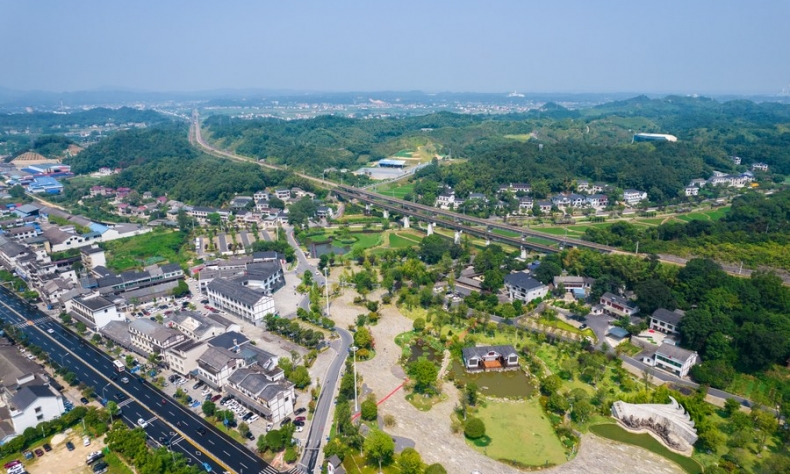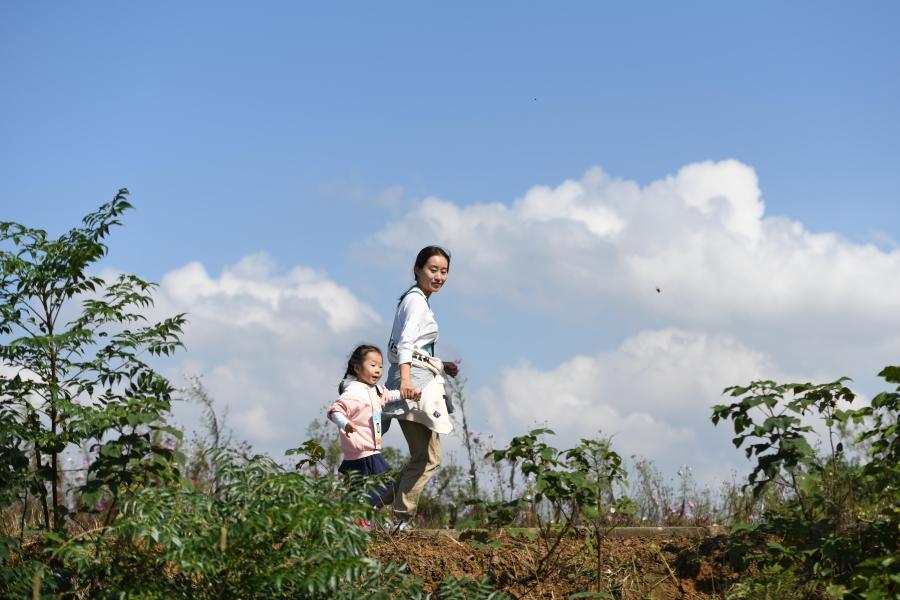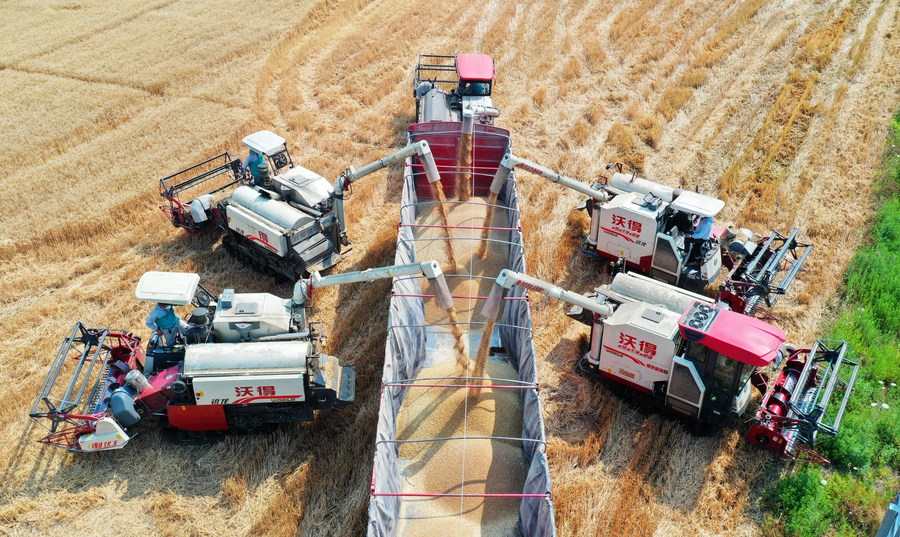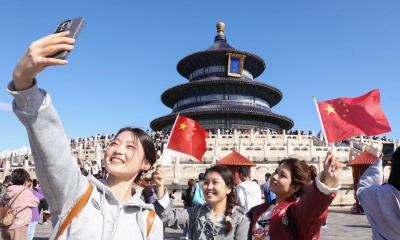Common Prosperity: Making a Dream a Reality

A fundamental restructuring of international governance is required if the benefits of global economic growth are to be shared more fairly, and the dream of common prosperity for all peoples is to be turned into reality.
On September 25, 1953, when China’s intention of achieving common prosperity was first announced in the People’s Daily, it must have seemed like an impossible dream. China was 87 percent rural, a similar proportion of the population were extremely poor and literacy rates were just over 20 percent.
Now, with literacy at 99.8 percent and rural extreme poverty eliminated, common prosperity is no longer a dream but a firm policy objective. However, common prosperity cannot be achieved by the Chinese government alone. As with the eradication of poverty, it will require the support and active mobilization of China’s entire population.
Eradicating poverty took the country decades. In 1986, when the economic opening of China was in its early stages, a national structure for tackling poverty was established under the auspices of the State Council. Not only were integrated policies implemented at national, provincial, county, township and village level, but society was engaged to support these policy initiatives.
Mass organizations, such as the Communist Youth League of China and the All-China Women’s Federation, were immediately encouraged to design involvements such as improved village schooling. From 1994, central government ministries were required to assist designated counties, while agencies at lower levels of government were assigned townships and villages to ‘adopt.’
In 2015, President Xi Jinping recommitted China to eradicating poverty by 2020 and, in the subsequent period, state-owned enterprises supported poverty-relief programs covering more than 10,000 villages. Similarly, many thousands of private enterprises aided over 10,000 rural enterprises in as many villages.
This mobilization was facilitated by China’s whole-process people’s democracy that can engage everyone in a common endeavour. Direct elections take place in villages and townships, the most local of five levels of democratic government. Elected representatives then vote in the membership of higher levels of governance up to, and including, the National People’s Congress. With all nine political parties, eight of them consultative, agreed on the goal of poverty eradication, it proved possible to sustain the systematic assault on poverty over many years.

Strong economic growth greatly assisted the elimination of rural poverty. However, it created an income distribution shaped like a pyramid with comparatively few rich people at the top and many on lower incomes beneath them. Achieving common prosperity requires that the benefits of growth be shared more fairly. President Xi Jinping has likened common prosperity to transforming the pyramid-shaped income distribution into one looking like an olive.
Attaining the goal of common prosperity will require everyone to contribute. Whole-process people’s democracy, which guarantees political rights, needs to be matched by whole-process social responsibility that determines corresponding duties. These apply not only to national government and individual citizens but also to local communities, corporations and even to international governance.
Corporate social responsibility – commercial organizations contributing expertise and other resources to social causes – is important and has been required of companies in China since the Company Law was amended in 2005. It is notable, though, that the contributions of state-owned enterprises are at a level twice that of privately-owned companies and foreign investment enterprises. The goal of common prosperity has been presented in international media, not as a moral duty, but as an attack on commercial profits and as a reason for not investing in China.
While corporate social responsibility is important, it alone will not achieve common prosperity. The United States, more than any other high-income country, relies on the largess of companies and philanthropy rather than on the beneficence of the state to support social welfare. But, in the eighteen years to 2021, income inequality in the U.S. rose from an already high level; that in China fell suggesting increased common prosperity.
Other data confirm China’s progress towards common prosperity. Between 2013 and 2021, the share of income received by the richest fifth of people in China fell by 1.5 percent, while the proportion going to the bottom two-fifths rose by 4.4 percent. Even so, the incomes of the richest fifth are 10.2 times those of the poorest fifth. This, the ‘income quintile share ratio,’ compares with an average of just 4.98 for the Euro area.

Individual social responsibility means identifying oneself with others, adopting attitudes and behaviour that favor the common good. In China, as elsewhere, many middle-class people presume that poverty and lack of success are due to laziness rather than to social unfairness or unfettered market forces. Those emphasizing laziness tend to have more extravert and authoritarian personalities, and social attitudes prioritizing hard work and intelligence as the reasons for success.
Graduates and individuals who study the humanities, arts and social sciences are less likely to blame economic failure on lack of effort. Therefore, education will perhaps foster a level of individual social responsibility necessary to achieve common prosperity. This may mean the middle class enjoying a smaller share of China’s growing wealth than in the past.
President Xi Jinping has frequently emphasized the importance of community social responsibility. In his report to the 20th National Congress of the Communist Party of China in October 2022, he stressed the need to ‘put the people first … stand firmly with the people, respond to their wishes, respect their creativity, and pool their wisdom.’ When people experiencing poverty in Guizhou were asked about the nature of poverty, they emphasized struggle and the physical and emotional suffering resulting from a lack of decent jobs, low income, and material deprivation. They stressed, too, the sense of powerlessness and the abuse meted out by institutions and other people.
Their wish would be to ensure that administrative systems always empower service users and treat them with respect. They would want staff to be trained in good customer service and compliance costs to be minimized, easing access and enabling service users to fulfil their social responsibilities and duties as parents, friends and citizens.
China demonstrated the strength of its collective social responsibility in the government’s effective campaign to eradicate poverty. New strategies are needed to achieve common prosperity as President Xi explained in his keynote speech on social security before the Political Bureau of the CPC Central Committee in 2021. The balance of strategic investment will change, promoting rural revitalization and a greener economy. In parallel, human capital development will upskill the workforce to embrace a technologically driven, post-industrial economy without a large informal sector dependent on low wages.

Such policies will increase market incomes, raising more taxation to facilitate further strategic investment and the increased social security and social protection that President Xi outlined. This would include enhanced rural social assistance, improved social insurance for migrant workers and those in the flexible ‘gig economy,’ better provincial-level coordination of social insurance, and more effective health and social care services.
While such collective social responsibility is necessary for achieving common prosperity, it is again insufficient. China’s well-being, like that of other countries, is dependent on fair trade and cooperative international relations.
With a trade system and financial arrangements that mostly benefit rich nations at the expense of developing ones, there is an evident lack of international social responsibility. National self-interest is invariably placed above global social responsibility as illustrated by inadequate action on climate change, COVID-19 and the UN’s Sustainable Development Goals.
Social responsibility, as a moral principle, cannot be bounded by national borders or be limited to collective, community, corporate and individual responsibilities. It must embrace international relations.
China, committed to a human community with a shared future, is leading by example with the ‘Belt and Road’ and ‘Global Development’ initiatives. These are based on economic cooperation and development in marked contrast to alliances made by the United States that seek military advantage. In 2022, the U.S. had 16 military agreements in Asia-Pacific region involving 24 countries and economic ones with just two governments; China had nine economic agreements with 15 countries and four military ones.
Self-evidently, a fundamental restructuring of international governance is required if the benefits of global economic growth are to be shared more fairly, and the dream of common prosperity for all peoples is to be turned into reality.
 Facebook
Facebook
 Twitter
Twitter
 Linkedin
Linkedin
 Google +
Google +







